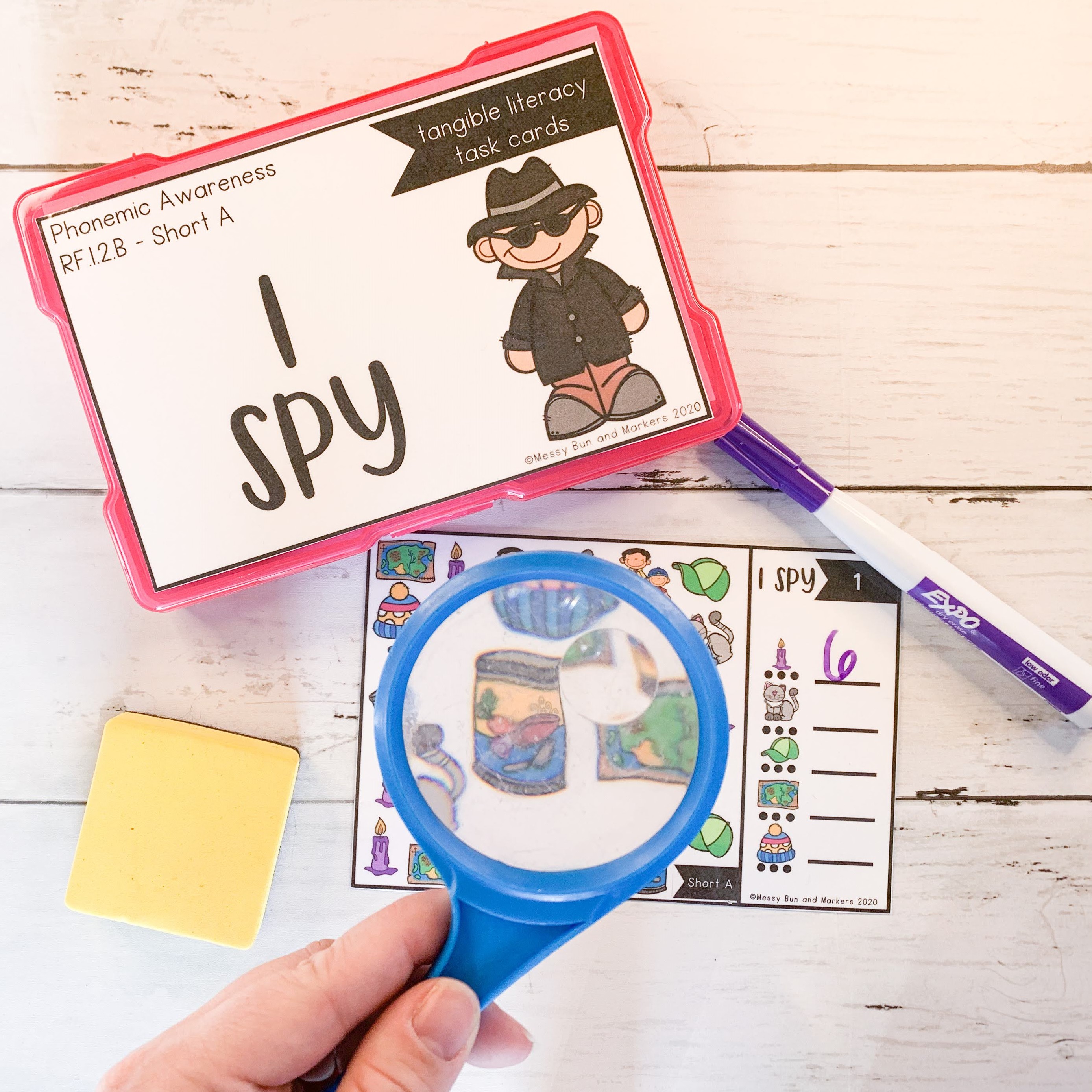5 Tips that will make you love hands-on phonics activities
Ever think hands-on phonics activities would be great in your classroom, but how can you make it happen without it being super complicated? I’ve been there! My first year in first grade I wasn’t sure how in the world I could make hands-on phonics activities work in my classroom!
What I learned over the years is that a great system for literacy centers is the key to growing student independence AND being able to use the super fun hands-on phonics activities!
Now, I know every class is different, heck every student is different, so this isn’t a one-size-fits-all approach.
But what I do know is that children benefit from routines. And keeping routines simple will go a looonnggg way with your students!
So, are you ready to implement hands-on phonics activities in your classroom? Here are my 5 best tips and tricks for how to do #allthethings!
Tip #1. Students- Get your students involved in phonics activity set up and clean up
Children absolutely love to have jobs in the classroom. They feel ownership over their classroom tasks and a sense of community. When everybody helps out it makes our jobs easier. But not without teaching them exactly what to do first. There certainly is a lot of prep work that goes into teaching the routines of setting up and cleaning up centers, but once your students are able to properly set up and clean up centers your life will be sooo much easier!
Tip # 2. Prep- Make hands-on phonics activity materials simple
Design your centers with few pieces for easy set-up and clean-up. Use materials that can be easily replaced, playdoh, crayons, dry erase markers. These things are most likely already in your classroom, so using materials that can be easily replaced is so helpful. Because we all know that kids lose things. Even if you just handed it to them like .2 seconds ago!! Things happen, and the last thing you need is missing or dried-out playdough to ruin a super fun hands-on phonics activity!

Tip # 3. Schedule- Set up a phonics activity schedule
you most likely have a schedule already. I like to keep mine as simple as possible. Can you see the theme here? Simple, simple, simple.
My students are grouped homogeneously, kids with similar needs are grouped together. This makes it easy for me to differentiate by group.
Each group rotates through 10 centers a week. 4 are task card centers for phonemic awareness, phonics, reading and writing. All of my task card centers are hands-on, but require little to no teacher prep! Win-Win! The other centers include read to self, listening center, writing prompts, and meet with the teacher (guided reading).
Each group knows what centers they will complete on Mondays, because it’s the same every Monday.
I have a schedule posted in my classroom so that students know which centers they complete each day. After a few weeks, they don’t even need to look at the schedule to know what they will do on a Monday!
Keep it simple- 6 steps to creating first grade literacy centers
Tip #4. Repeat- Create phonics activities where the phonics skill can easily be changed
How many times have you played a game that you love? Each time you play you get better, right? So why not create that feeling for our students? We want them to win at reading EVERY. SINGLE. DAY. And there’s no better way to learn than to play! Hands-on phonics activities should feel like playing, and when they can teach another student how to play the center they become the teacher and reinforce those skills even stronger!

I love to create literacy center task cards that are low-no teacher prep, and also can easily be changed out for a new phonics skill. I got so sick of pre-teaching new centers every week… it felt like such a waste of time… Now, my students learn the rules for a game, like these I Spy task cards, and when I change out the phonics skill the following month, they can still complete the activity no problem!
If you are interested in creating your own literacy centers, check out my 6 Steps to Creating First Grade Literacy Centers here! You’ll be able to create literacy centers your students will love, and that have little-no teacher prep! Woot woot!
Tip #5. Organize- System for storing student work and center materials
A HUGE part of making hands-on phonics activities work in your classroom has to do with organization. And you don’t have to spend a fortune to do it! Sure, you can buy the cutest containers to store all your materials. But honestly, a plastic butter container that’s been washed out works just as well!
And let’s be real, as wonderful as kids are, they are not always super careful with your materials. So if they break the lid to your butter container, it won’t hurt your wallet as much as breaking the pretty one from The Container Store!
Literacy is such a huge part of first grade, and so my classroom has literacy centers all over it! I find that it is easiest to have designated areas for each literacy center. This way all the materials for one center are together and don’t get mixed up with materials for other centers.

My favorite way to keep student work organized is with these Ketchup folders, and you can read all bout how I use them in my classroom here!
So there you have it! My 5 best tips for implementing hands-on phonics activities in your classroom.
What is your favorite tip or trick for getting hands-on phonics activities to work well in your classroom?
Happy learning!
Alexandra



2 Responses